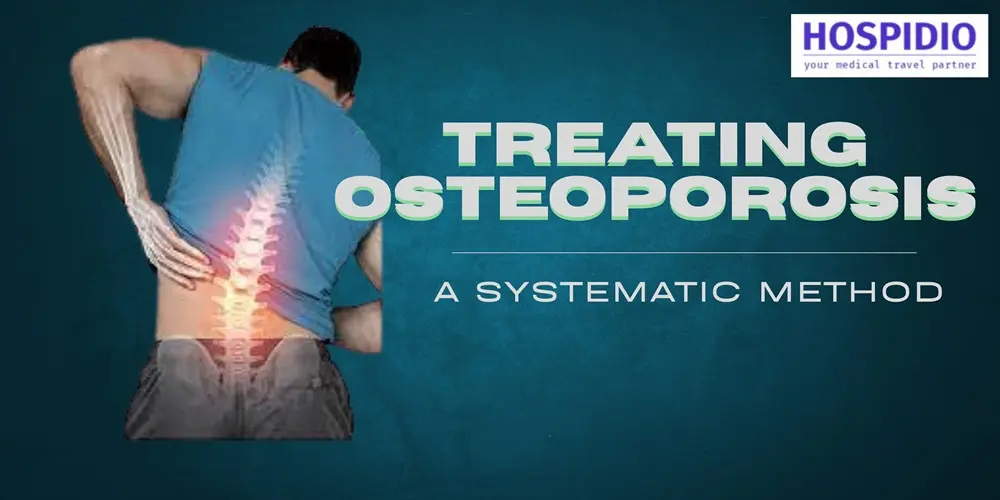Osteoporosis is a silent condition that weakens bones, making them fragile and prone to a fracture. The disease affects millions worldwide, particularly postmenopausal women, though men are also at risk as they age. Osteoporosis develops when bone density decreases due to various factors, including hormonal changes, poor nutrition, and sedentary lifestyles. While it is common with ageing, osteoporosis isn’t inevitable. With the right lifestyle choices such as a nutrient rich diet, regular exercise, and avoiding harmful habits like smoking you can significantly reduce your risk.
In this blog, we’ll get to know about the causes, symptoms, and ways to prevent osteoporosis, helping you take early steps to protect your bone health for a stronger future.
Get a free cost estimate
What is Osteoporosis?
Osteoporosis is a condition that causes bones to weaken and become fragile, increasing the risk of fractures. It occurs when the body's bones either do not grow enough or they lose too much bone density, or both. As a result, fractures develop in bones, which make them weak like a lattice. This condition usually worsens without any symptoms until it gets to the point where it breaks, usually in the wrist, hip, or spine.
Symptoms of Osteoporosis
Osteoporosis is often referred to as a "silent disease" as its early stages are usually unnoticed. Some of the symptoms are as follows:
Bone fractures: Which occur easily, especially in the spine, wrist, hip, or other bones after minor falls or injuries.
Back pain: It is caused by a collapsed or fractured vertebra.
Loss of height: It happens due to over time compression fractures in the spine.
Stooped posture: The curvature of the spine, known as kyphosis, which can give a hunchback appearance.
Weakness in bones: Which causes difficulty with mobility or balance.
Causes of Osteoporosis
Several factors can contribute to the development of osteoporosis, some of which are as follows:
Age:
Bone density peaks in your 20s and then naturally begins to decrease. The risk of osteoporosis increases with age, especially after 50.
Hormonal changes:
A significant cause is the reduction of oestrogen in women after menopause or low levels of testosterone in men, both of which play critical roles in bone health.
Dietary factors:
Low calcium intake: Long-term low calcium intake can lead to diminished bone density.
Vitamin D deficiency: Vitamin D is essential for calcium absorption, and its deficiency can increase the risk of bone fragility.
Lifestyle factors:
Sedentary lifestyle: Lack of physical activity, especially weight-bearing exercises, can weaken bones.
Smoking and excessive alcohol: Both are linked to decreased bone density and an increased risk of fractures.
Medical conditions:
Chronic conditions such as rheumatoid arthritis, celiac disease, or hyperthyroidism can increase osteoporosis risk.
Certain medications, like long-term use of corticosteroids, can also weaken bones.
Genetics:
A family history of osteoporosis or fractures may make you more susceptible to the condition.
Risk Factors
Some risk factors for osteoporosis include:
Gender (women are more prone than men)
Family history
Small body frame
Prolonged use of certain medications like steroids
Low levels of sex hormones
Prevention for Osteoporosis
Calcium and Vitamin D intake: Maintaining an adequate intake of calcium and vitamin D is key.
Exercise: Weight-bearing exercises like walking, running, or strength training help to maintain bone density.
Healthy lifestyle: Avoid smoking and limit alcohol intake.
Bone density tests: Regular bone density screenings are recommended, especially for postmenopausal women or men over 50.
Conclusion
The disease called osteoporosis is curable and even more dangerous since it causes bone fragility and increases the risk of fractures, which typically occur at the wrist, hip, and vertebral sites. Older men are also at risk, however postpartum women are more sensitive. Since the majority of disease-afflicted individuals do not exhibit any warning symptoms, primary prevention and therapy are critically needed. Among the major causes of the illness are hormonal variables, diet, lifestyle choices, and genetic predispositions.
By practising and forming healthy habits, such as eating a diet high in calcium and vitamin D, exercising frequently, and abstaining from smoking and excessive alcohol consumption, osteoporosis can be prevented. However, routine bone density testing is advised for both men and women over a certain age in order to identify osteoporosis and treat it early. However, these lifestyle modifications and treatment compliance will reduce the possibility of osteoporosis, ensuring the preservation of strong, healthy bones for the duration of an individual's life.
Himang
Author
Himang Gupta is a skilled medical content writer with a Bachelor's degree in Biotechnology and extensive experience crafting engaging and informative blogs. Passionate about simplifying complex medical topics, he ensures his content resonates with readers. When not researching or writing, Himang enjoys scrolling Instagram, cracking jokes, and savoring the flavor of elaichi—his ultimate treat after a productive writing session.
Guneet Bindra
Reviewer
Guneet Bhatia is the Founder of HOSPIDIO and an accomplished content reviewer with extensive experience in medical content development, instructional design, and blogging. Passionate about creating impactful content, she excels in ensuring accuracy and clarity in every piece. Guneet enjoys engaging in meaningful conversations with people from diverse ethnic and cultural backgrounds, enriching her perspective. When she's not working, she cherishes quality time with her family, enjoys good music, and loves brainstorming innovative ideas with her team.

